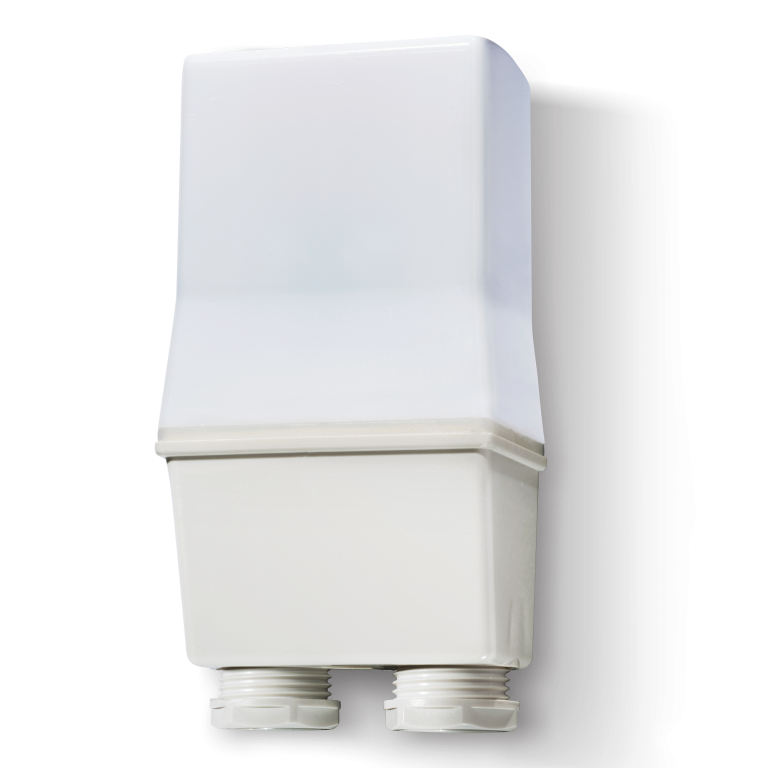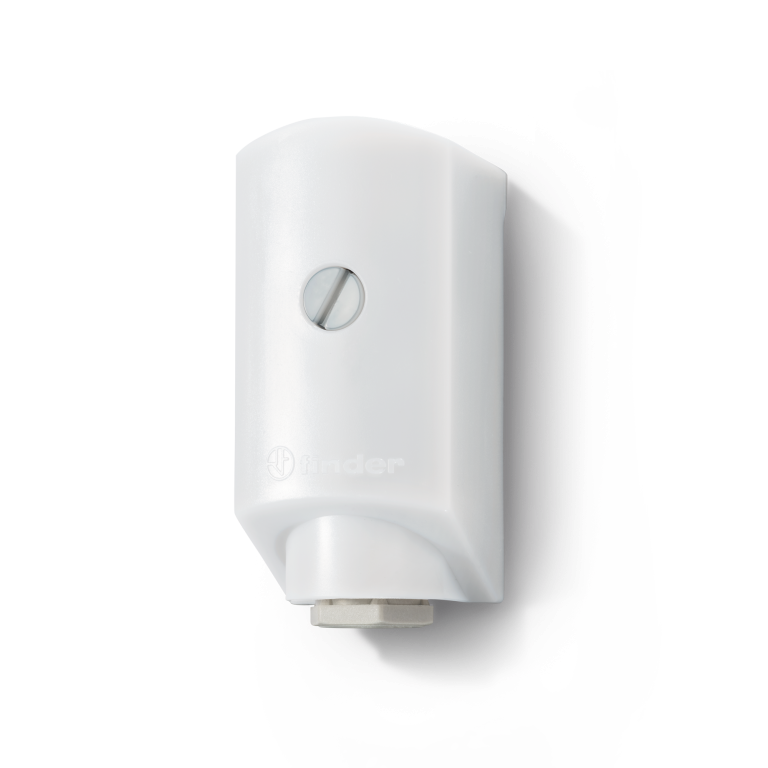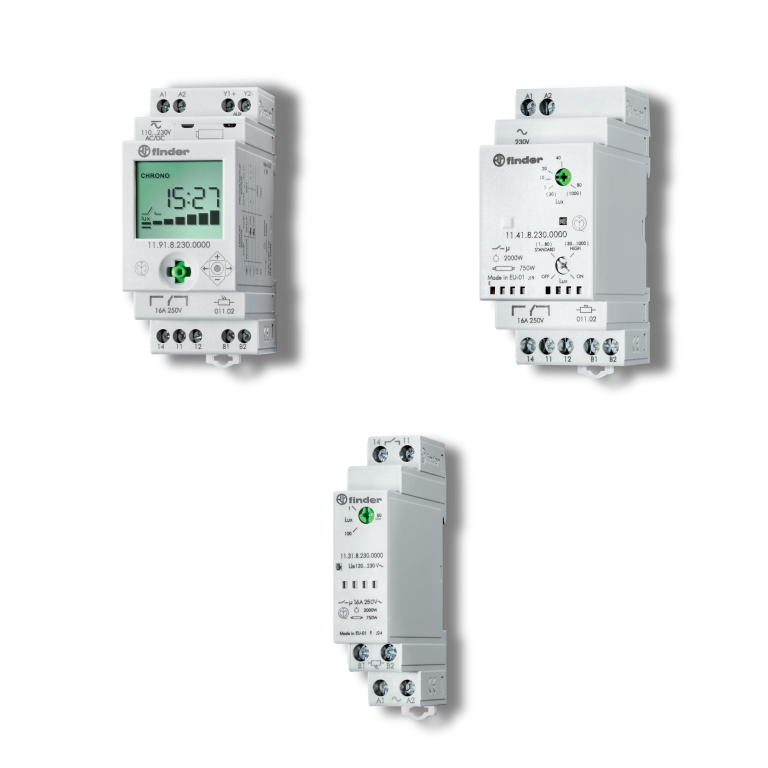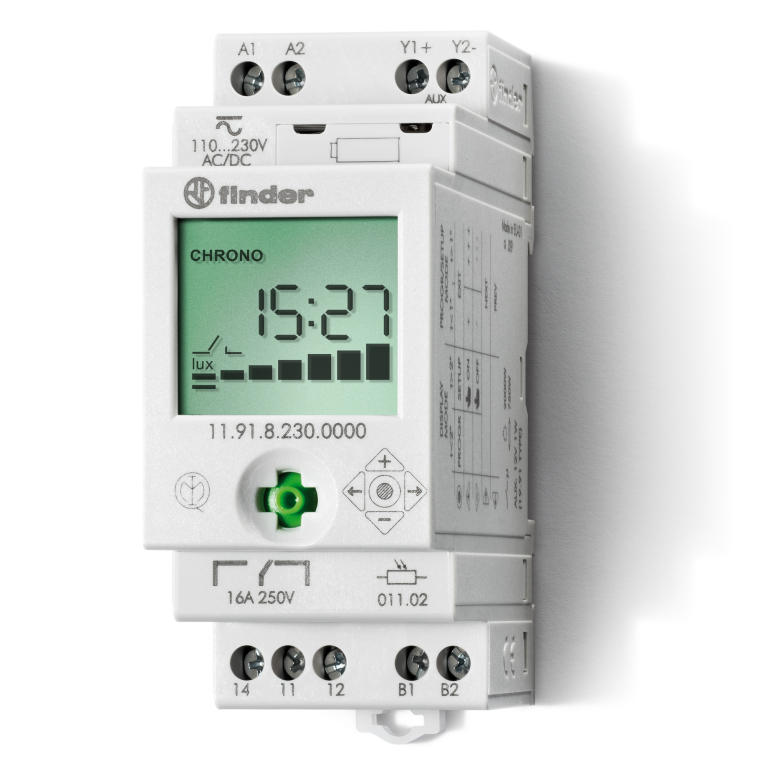What is a light dependent relay/twilight switch? – Finder
Throughout this article, we will take a look at the twilight switch (Finder's light dependent relay), what it is, and its features and benefits for its use.
How does Finder's light dependent relay/twilight switch work?
Finder’s 10 Series light dependent relay (also known as a twilight switch) is equipped with a light sensor (a sensitive *Photodiode) that produces a signal that depends on the amount of light illuminating it. Finder’s 11 Series modular light dependent relays are designed to be installed within electrical panel enclosures in conjunction with a remote light-sensitive sensor.
The electronics in the light dependent relay use that signal to determine if the ambient light level has fallen below the threshold level. Once the electronics have determined conditions are correct to require illumination, they energise the output relay and activate the lighting circuit to provide light.
The light feedback compensation patent minimizes set-up and operational problems by counteracting the effect of the sensor responding to the light emitted from the lighting under control. These technical refinements ensure the optimum use of electrical power with ease of set-up and operation, making them particularly suited to applications in almost all residential, commercial, public, and industrial settings.
The most common applications for their use are garden and night lighting, shop displays, streetlights and car park lighting.
*A photodiode is a form of light sensor that converts light energy into electrical energy (voltage or current). Photodiodes are mainly made from silicon and germanium materials and comprise of optical filters, built-in lenses and surface areas.
When a beam of light hits, electrons are loosened, causing electron-hole pairs which allow electrical current to flow. The brighter the light present, the stronger the electrical current will be.
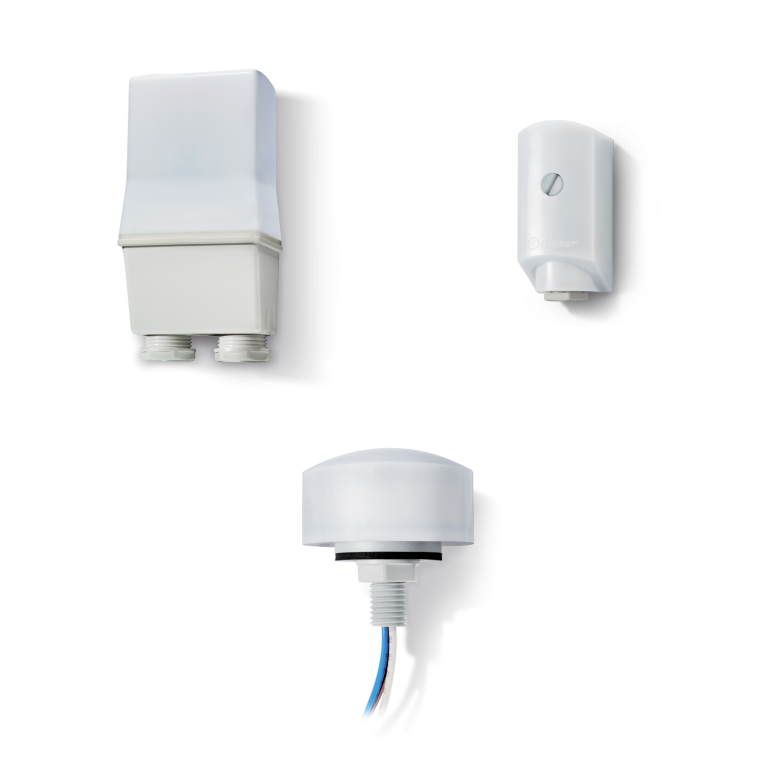
Finder’s range of light dependent relays
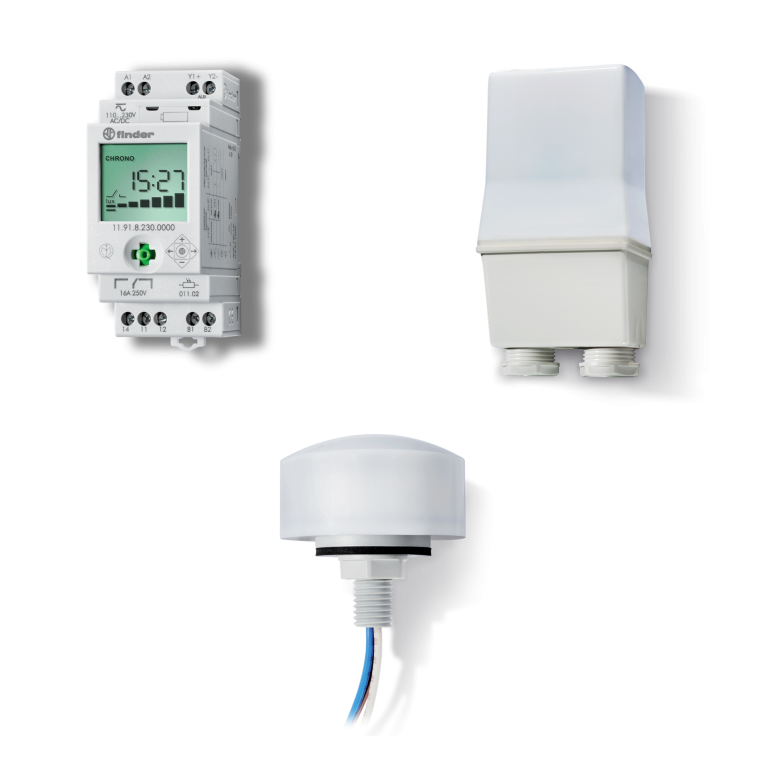
Finder’s light dependent relay (twilight switch) switches the lights on and off depending on the ambient light level threshold set. This is an energy-efficient way of controlling lighting systems such as streetlights. The relays are available in modular versions for mounting on a 35 mm rail in outline widths of 1 or 2 modules (11 Series) or for mounting on walls, poles or on streetlights (10 Series).
Employing the patented “Zero hysteresis” and “Light feedback compensation” principles, Finder’s light dependent relays are extremely accurate devices that can guarantee the highest performance at all times. (And the automated timing reductions for the first 3 cycles is a great aid to installation).
Finder’s 10 Series are IP54 rated and feature integrated light sensors. The 10 Series features models with NO contacts configured as single outputs, two independent outputs and double pole outputs.
Finder’s 11 Series are IP20 rated, with an IP54 rating for the external sensor. The supplied sensor Type 011.02 is suitable for wall or pole mounting and a flush-mounted sensor Type 011.03 is available as an optional extra.
The contacts on the 11 Series have SELV separation from the supply circuitry.
The 11 Series features models with NO contact. – Type 11.31 ), CO contacts (Type 11.41) or NO and CO contacts (Type 11.42).
The Type 11.91 has the addition of a time switch feature, and there is also an auxiliary output which in conjunction with module Type 011.19 gives an additional light dependent switching channel that is independent of the timed output.
Why choose Finder’s light dependent relays?
ENERGY SAVINGS
Finder’s light dependent relay (twilight switch) range only switch on the lights when the level of natural light drops below the brightness value set. This means you can rest assured that you are using light when only strictly necessary. Finder’s 10 Series has thresholds that can be set in the range of 1-80 lux and the 11 Series has an extended threshold range of 1-1000 lux.
COMFORT
There is no need to schedule the lighting via a timing device because it will switch on as soon as it gets dark. All you need to do is set the switching brightness level threshold, and the deed is done!
PRECISION
With several Italian patents to its name, such as the zero-hysteresis principle and the light feedback compensation patents, Finder’s light dependent relays are extremely accurate devices that can guarantee the highest performance at all times.
POLE AND WALL MOUNTING
Finder’s 10 Series light dependent relays with integrated photosensors will switch lights on and off according to the ambient light level. They are IP54 rated and designed to be installed on walls. poles or streetlights, and are therefore particularly suited for street lighting, or to manage lighting in car parks or walkways.
Type 10.32 is a light dependent relay, “twilight switches” for switching on lamps according to ambient brightness level. Equipped with double output, 2 NO 16A contacts, with bipolar load interruption (L + N).
Type 10.41 Light Dependent Relays, “twilight switches” for switching on lamps according to ambient brightness level.
Equipped with double output, 1 NO 16 A contact. Single pole break (L).
Type 10.42 Light Dependent Relays, “twilight switches” for switching on lamps according to ambient brightness level. Pole and wall mount. Equipped with double regulation and double output 2 NO 16A, single pole interruption (L).
Features include (according to Type):
- Bipolar load interruption (phase + neutral) available on Type 10.32
- Sensitivity adjustment from 1 to 80 lux
- Cadmium-free contacts
- Cadmium-free photosensor element (IC photo diode)
- Circuit with isolation transformer
- Italian Patent – The innovative principle of compensation for the influence of controlled lights, also compatible with slow ignition lamps (up to 10 minutes)
- First 3 operating cycles of the relay without delay at switching on and off, in order to facilitate the adjustment process by the installer
- Available for 230 and 120 V AC (50/60 Hz) power supplies
Type 10.51 Light Dependent Relays Type 10.51 Light Dependent Relays, “twilight switches” for switching on lamps according to ambient brightness level. Pole and wall mount. Small size, 1 NO 12 A output, single pole break (L)
Features include:
- Sensitivity adjustment from 1 to 80 lux
- Cadmium-free contacts
- Cadmium-free photosensor element (IC photo diode)
- Italian Patent – The innovative principle of compensation for the influence of lights commanded
- First 3 operating cycles of the relay without delay at switching on and off, on in order to facilitate the adjustment process by the installer
- Available for 230 and 120 V AC (50/60 Hz) power supplies
Type 10.61 Light Dependent Relay “twilight switch” for the automatic control of lighting according to the ambient light level.
Single pole switching – 1 NO 16 A. For mounting on street light body.
Features include:
- Fixed sensitivity 10 lux (± 20%)
- Cadmium-free contact material
- Cadmium-free photosensor (IC photo diode)
- For the first 3 working cycles, the delay time (On and Off) is reduced to zero in order to aid installation
- Available for 230 and 120 V AC (50/60 Hz) operation
- Prewired with silicone wire, 500 mm length
- Light dependent relay 1 NO contact meeting ENEL specifications for public lighting
The 11 Series comprises light dependent relays (twilight switches) for controlling lighting according to the ambient brightness level – supplied with a separate photosensitive sensor.
These devices include the following features (according to Type):
- 1 contact
- 35 m wide
- 230 V AC, 24 V AC/DC version also available
- 35 mm rail (EN 60715) mount
Type 11.31 – light dependent relay 16A
Type 11.41 – light dependent relay 16A
Type 11.42 – light dependent relay 12A
Type 11.91 Light Dependent Relay “twilight switch” for the automatic control of lighting according to the ambient light level – using a separate photosensor.
Auxiliary output, for use with 19.91 Power Module, provides an output directly related to the light level (i.e. without intervention of any time delays).
Features include:
- “Daily” time switch function – programmable to inhibit main output (for energy saving)
- Auxiliary output – directly driven by the photosensor
- Italian patent “Light feedback compensation” principle
- Sensitivity adjustment from 1 to 150 lux
- LCD display for status indication, set-up and programming
- Internal battery for set-up/programming without supply and for time/program back-up in case of power failure (5 years)
- Low stand-by power consumption
- SELV separation between contact and supply circuit
- Double insulation between supply and photosensor
- 35 mm rail (EN 60715) mount
- Cadmium-free contact material
- Cadmium-free photosensor (IC photo diode)
